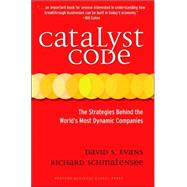
| Acknowledgments | p. ix |
| What Is a Catalyst? | p. 1 |
| Build a Catalyst Strategy | p. 21 |
| Identify the Catalyst Community | p. 45 |
| Establish a Pricing Structure | p. 71 |
| Design the Catalyst for Success | p. 93 |
| Focus on Profitability | p. 119 |
| Compete Strategically with Other Catalysts | p. 145 |
| Experiment and Evolve | p. 169 |
| Cracking the Catalyst Code | p. 193 |
| Additional Readings | p. 205 |
| Notes | p. 207 |
| Index | p. 217 |
| About the Authors | p. 227 |
| Table of Contents provided by Ingram. All Rights Reserved. |
The New copy of this book will include any supplemental materials advertised. Please check the title of the book to determine if it should include any access cards, study guides, lab manuals, CDs, etc.
The Used, Rental and eBook copies of this book are not guaranteed to include any supplemental materials. Typically, only the book itself is included. This is true even if the title states it includes any access cards, study guides, lab manuals, CDs, etc.